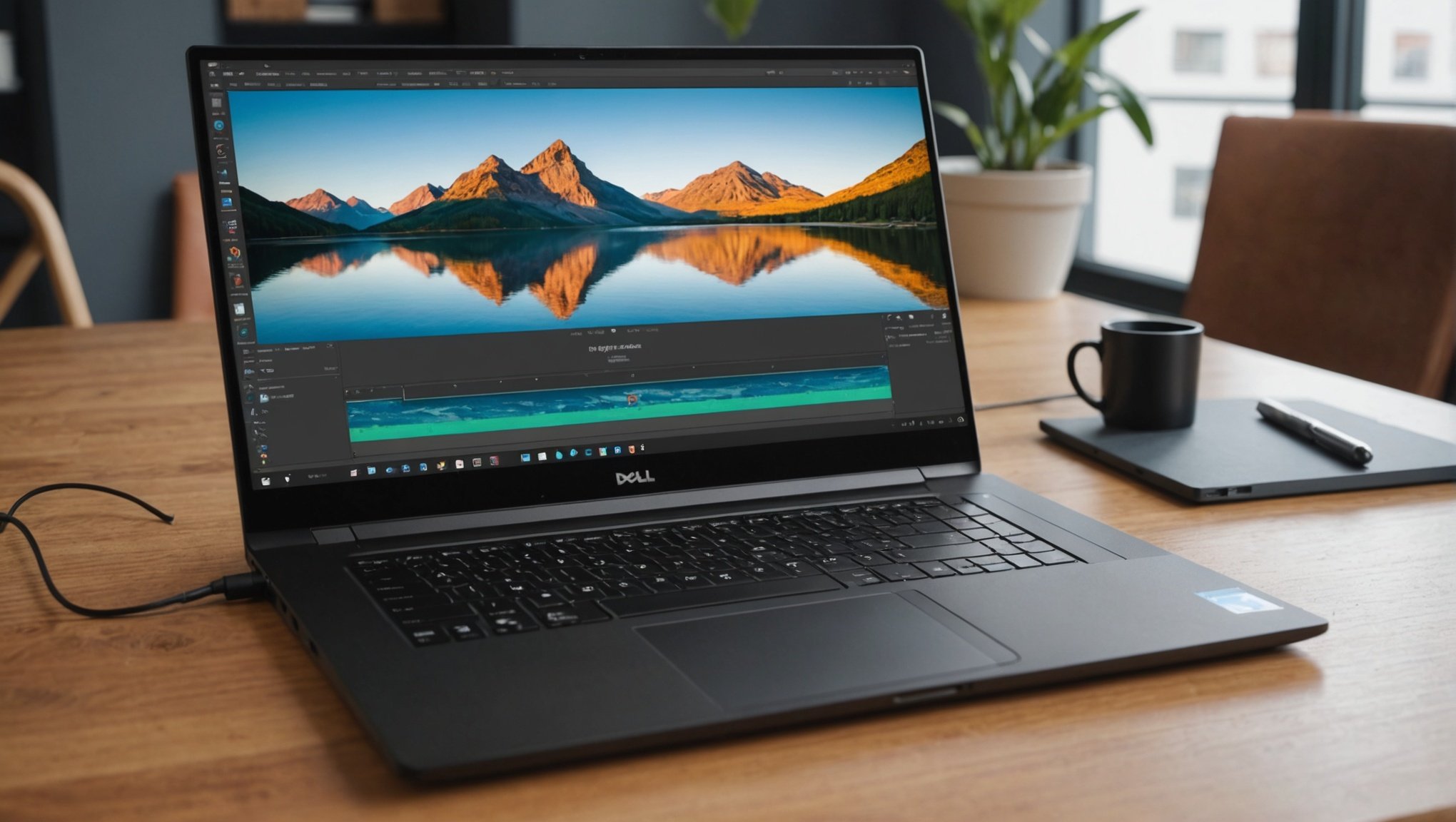Video editing can be a demanding task for any computer, especially when using sophisticated software like DaVinci Resolve. If you’re using a Dell Inspiron 15 7590, you may notice that the system struggles to keep up with your editing projects. Fear not, though; with some strategic optimizations, you can significantly enhance your laptop’s performance. This article will guide you through practical steps to ensure your Dell Inspiron 15 7590 operates smoothly and efficiently, making your video editing endeavors in DaVinci Resolve a more seamless experience.
Understanding Your Dell Inspiron 15 7590’s Specifications
Before diving into optimization techniques, it’s essential to understand what you’re working with. The Dell Inspiron 15 7590 is a versatile laptop designed to handle a variety of tasks. It typically comes with an Intel Core i7 processor, 16GB of RAM, and a NVIDIA GeForce GTX 1650 graphics card. These specifications are decent, but video editing software such as DaVinci Resolve requires more than just decent specs; it needs a finely-tuned system.
Additional reading : How can you set up a Raspberry Pi 4 as a Nextcloud server for personal file storage?
Given these specs, you might think your laptop is ready to tackle any editing project you throw at it. However, without proper optimization, even the best hardware can fall short. Knowing the strengths and limitations of your Dell Inspiron 15 7590 will help you make informed decisions about which areas need improvement.
Understanding your laptop’s hardware is only the first step. The next involves fine-tuning both the software and hardware settings to ensure that DaVinci Resolve runs as efficiently as possible.
Topic to read : How to set up an ASUS TUF Gaming X570-Plus motherboard for a stable overclocking experience?
Optimizing System Settings for Better Performance
Once you have a grasp on your laptop’s hardware, the next step is to dive into the system settings. Adjusting these settings can have a significant impact on performance, especially when working with resource-intensive software like DaVinci Resolve.
Power Settings
Begin by optimizing your power settings. Navigate to the Control Panel and select “Power Options.” Here, you’ll want to choose the “High Performance” power plan, which allocates more resources to your applications. This change ensures that your CPU and GPU are running at their highest capabilities, rather than throttling to save energy.
Background Processes
Next, address the background processes. Many applications run in the background, consuming valuable resources. Open Task Manager and review the running processes. End any unnecessary background processes to free up memory and CPU cycles. Be cautious not to end system-critical tasks.
Disk Cleanup and Defragmentation
Perform a disk cleanup and defragmentation. Over time, files can become fragmented, slowing down your system. Use the built-in Disk Cleanup utility to remove temporary files, and then run the Disk Defragmenter to reorganize fragmented data. This can speed up data access times, making your system more responsive.
BIOS and Drivers
Lastly, ensure that your BIOS and drivers are up to date. Dell frequently releases updates that can enhance performance and compatibility. Check the Dell Support website for the latest BIOS and driver updates for your Inspiron 15 7590. Installing these updates can resolve underlying issues that may be affecting your system’s performance.
By carefully adjusting these system settings, you can create an environment that is more conducive to high-performance video editing.
Software Adjustments in DaVinci Resolve
Now that we’ve optimized the system settings, it’s time to focus on DaVinci Resolve itself. The software offers various settings that can be adjusted to improve performance.
Project Settings
Start by opening DaVinci Resolve and navigating to the Project Settings. Here, you can adjust the timeline resolution and frame rate. Lowering the timeline resolution can significantly improve playback performance, especially when working with 4K footage.
Optimized Media and Proxies
Next, enable Optimized Media and Proxies. These features allow DaVinci Resolve to create lower-resolution versions of your footage, which can be used during the editing process. This reduces the strain on your system and can make playback smoother. You can switch back to the original high-resolution footage when rendering the final project.
Render Cache and GPU Configuration
Adjust the Render Cache settings. Setting the Render Cache to “Smart” allows DaVinci Resolve to automatically cache portions of the timeline that are causing playback issues. You can also manually cache specific sections by right-clicking on the timeline.
Ensure that DaVinci Resolve is using your dedicated GPU for processing. Go to the Preferences menu and navigate to the “Memory and GPU” section. Select your NVIDIA GeForce GTX 1650 as the primary GPU for processing. This offloads tasks from the CPU to the more capable GPU, boosting performance.
Background Rendering
Enable Background Rendering to automatically render portions of the timeline while you’re working on other tasks. This ensures that your timeline playback is smoother and reduces the chances of glitches or stuttering.
By tweaking these settings within DaVinci Resolve, you can create a more efficient workflow, allowing you to focus on your creative process without being bogged down by performance issues.
Hardware Upgrades for Enhanced Performance
While software and system optimizations can go a long way, sometimes hardware upgrades are necessary to achieve the best performance. Upgrading specific components of your Dell Inspiron 15 7590 can make a significant difference.
RAM Upgrade
One of the most impactful upgrades you can make is increasing your RAM. While 16GB is adequate, upgrading to 32GB can provide a noticeable improvement, especially when working with large video files and complex timelines. More RAM allows your system to handle multiple tasks simultaneously without slowing down.
SSD Upgrade
Consider upgrading to a larger and faster SSD. The Dell Inspiron 15 7590 typically comes with an NVMe SSD, but upgrading to a higher-capacity SSD can provide more space for your projects and improve data access speeds. This can reduce loading times and make your system more responsive.
External Storage Solutions
Invest in external storage solutions, such as an external SSD or RAID array. These can be used to store your raw footage and project files, freeing up space on your internal drive. External storage solutions can also offer faster data transfer speeds, especially if they support Thunderbolt 3.
Cooling Solutions
Lastly, consider cooling solutions. Video editing can generate a significant amount of heat, which can lead to thermal throttling. Using a laptop cooling pad or an external cooling solution can help maintain optimal temperatures, ensuring that your laptop runs at its best.
Upgrading these hardware components can provide a substantial boost in performance, making your Dell Inspiron 15 7590 more capable of handling demanding video editing tasks.
Maintaining Your Optimized System
After implementing these optimizations, it’s essential to maintain your system to ensure continued performance. Regular maintenance can prevent issues from arising and keep your Dell Inspiron 15 7590 running smoothly.
Regular Updates
Regularly check for and install software updates. This includes updates for DaVinci Resolve, your operating system, and device drivers. Updates often include performance improvements and bug fixes that can enhance your system’s stability.
System Cleanliness
Keep your system clean by performing routine disk cleanups and removing unnecessary files. This prevents your storage from becoming cluttered, which can slow down your system.
Antivirus and Security
Ensure that your antivirus software is up to date and regularly scan your system for malware. Malware can significantly impact performance, so keeping your system secure is crucial.
Backup Your Data
Regularly back up your data to prevent data loss. This includes your project files, raw footage, and any other important data. Using both local and cloud backups ensures that your data is safe in case of hardware failure.
By following these maintenance practices, you can ensure that your optimized Dell Inspiron 15 7590 continues to perform at its best.
In conclusion, optimizing the performance of your Dell Inspiron 15 7590 for video editing in DaVinci Resolve involves a combination of system settings adjustments, software tweaks, hardware upgrades, and regular maintenance. By understanding your laptop’s specifications, fine-tuning the system and software settings, upgrading hardware components, and maintaining your optimized system, you can create an efficient and effective video editing environment.
With these steps, your Dell Inspiron 15 7590 will be better equipped to handle the demands of DaVinci Resolve, allowing you to focus on your creative work without being hindered by performance issues. Whether you’re a professional editor or a hobbyist, these optimizations will make a noticeable difference in your workflow, enabling you to bring your video projects to life with ease and efficiency.











